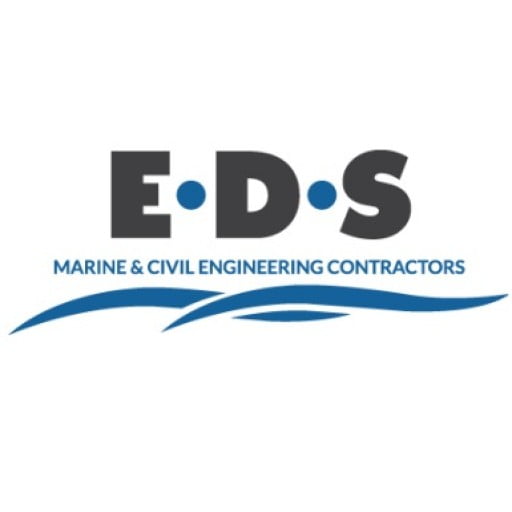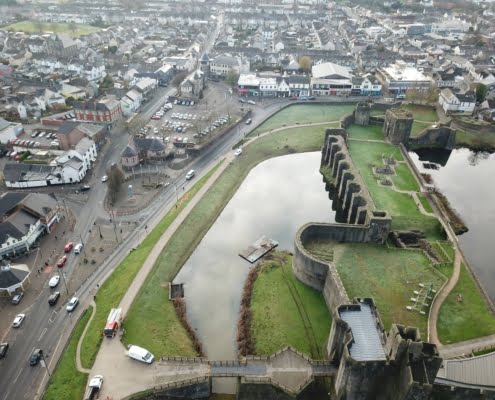Moat Bank Stabilisation at Caerphilly Castle
EDS successfully completed reservoir safety works at Caerphilly Castle to assure the long-term stabilisation of the outer moat embankment.
Caerphilly Castle is one of the finest castles of medieval Western Europe, and has a long standing relationship with EDS. The second largest castle in the UK is a busy tourist destination and is frequented by the local community who use the grounds of the castle for recreation and fishing purposes.
The outer moat had suffered erosion along the upstream face toe from local wildlife (geese) and at the outlet to the auxiliary overflow from its operation. EDS were engaged by Cadw Welsh Government to complete the works to stabilise the upstream embankment toe and provide long-term erosion protection by installing rock mattresses, rock rolls and coir rolls.
Challenge
- Steep upstream embankment face and crest path used by tourists for accessing the Castle and its grounds.
- Navigating any water based plant within the moat and beneath the visitor centre entrance access bridge.
- Fluctuation in the moat water levels working in summer and winter conditions.
Solution
- A water-based construction methodology was deployed involving an excavator mounted on a floating barge, constructed from individual steel pontoons.
- A trench was excavated along the upstream embankment toe under an archaeological watching brief to allow a soft engineering solution comprising rock rolls and coir rolls to be placed and backfilled to reinstate the embankment toe.
- Rock and coir rolls were used over harder engineering solutions such as gabions and rock armour as they allow natural sediment accretion and create a living revetment that provides for erosion control and rapid vegetation establishment.
- Stability calculations were provided to support the desired pontoon arrangement, considering the many permutations of plant positioning and materials storage during the installation process.
- The works required careful planning and navigation of the pontoons within the moat to avoid adversely affecting flora and fauna, whilst permitting passage beneath the visitor access bridge and accommodating the fluctuation in moat water levels.
Before stabilisation
After stabilisation
Despite poor weather conditions which would have resulted in working methods from the embankment having to be suspended, EDS’ innovative approach enabled the works to be carried out successfully with minimal disruption and impact on the historic site, reservoir embankment and public access routes.
EDS has a track record of working with reservoir owners and operators to develop and deliver engineering solutions in challenging locations for a safer environment.











